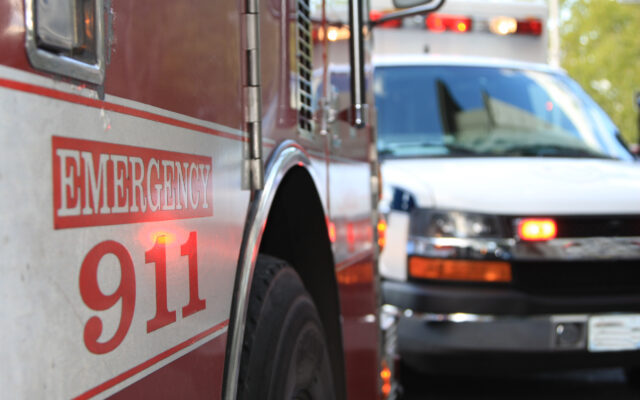SpaceX launches Falcon Heavy rocket on classified Space Force mission

A SpaceX Falcon Heavy rocket carrying a suite of classified U.S. Space Force payloads blasted off on the rocket’s fourth flight Tuesday, the first for the nation’s most powerful operational launcher since 2019 and the first since then to feature spectacular side-by-side landings of its two strap-on boosters.
Partially obscured by dense fog, liftoff from historic pad 39A at the Kennedy Space Center came at 9:41 a.m. EDT when the huge rocket’s 27 Merlin first-stage engines, nine in each of three strapped together side-by-side Falcon 9 boosters, ignited with more than 5 million pounds of thrust, the equivalent power of 18 747 jumbo jets.
After a final round of lightning-fast computer checks, the 230-foot-tall Falcon Heavy, tipping the scales at some 3.1 million pounds, was released to roar skyward, arcing away to the east over the Atlantic Ocean in a ground-shaking direct ascent to a circular orbit 22,300 miles above the equator.
The Falcon Heavy is the most powerful operational rocket in the U.S. inventory, but that honor is expected to pass to NASA’s huge Space Launch System booster when it flies for the first time later this month to send an unpiloted Orion crew capsule around the moon and back.
The most-powerful-rocket title then will be handed off to SpaceX’s gargantuan Super Heavy-Starship when it finally blasts off on a maiden flight late this year or early next.
That said, the Falcon Heavy did not disappoint, putting on a dramatic sky show as it climbed out of the fog blanketing the spaceport atop a brilliant jet of fiery exhaust, the roar of its 27 engines shattering the morning calm.
The Falcon Heavy’s two side boosters, both making their first flight, were programmed to flip around moments after separation and to restart three engines each to reverse course. Another firing slowed the boosters for the plunge back into the dense lower atmosphere.
Plummeting toward the ground, the boosters restarted their central core engines, deployed landing legs and settled to picture-perfect, side-by-side touchdowns on concrete pads at the Cape Canaveral Space Force Station as sonic booms rumbled across Florida’s Space Coast.
The landings marked the 24th and 25th at the Space Force station and SpaceX’s 150th and 151st successful Falcon-family booster recoveries overall.
Unlike the side boosters, the Falcon Heavy’s core stage, also making its first flight, used all of its propellant to push the second stage out of the lower atmosphere and into space. No recovery was planned.
The launching marked the first fully operational dedicated national security payload to fly aboard SpaceX’s Falcon Heavy. But details about the classified cargo were scanty and SpaceX ended its launch commentary with side booster touchdown.
“We’ve worked side-by-side with SpaceX to ensure the Falcon Heavy meets all our requirements and has a successful launch,” Walt Lauderdale, mission director for the USSF-44 launch, said in a pre-launch statement.
“This will be the first Falcon Heavy launch in over three years and we’re excited to get these payloads to space. This launch is an important milestone and continues a robust partnership that is cementing a capability that will serve the nation for years to come.”
Two payloads were mounted atop each other in the second stage nose cone, one known as the Shepherd Demonstration and the other a carrier spacecraft known as the Long Duration Propulsive ESPA, or LDPE 2, carrying a half dozen sub payloads.
“The LDPE platform is a standardized satellite bus that can host multiple payloads, including separable spacecraft,” the Space Force said in a statement. “This approach makes rideshare more affordable for a wide range of small and secondary payloads and takes several steps to accelerating the USSF’s pivot to new, more resilient space architectures.”
The Shepherd Demonstration satellite “hosts payloads that mature technologies and accelerate risk reduction efforts,” the Space Force told Spaceflight Now in a response to a question about it’s nature.
A spokesperson said the satellite carried multiple Space Force payloads, but no details were provided.
The Falcon Heavy was launched on its maiden flight in February 2018, famously boosting a dummy payload — a cherry red Tesla Roadster carrying a spacesuited mannequin in the driver’s seat — into deep space. The rocket’s two outboard boosters executed flawless side-by-side landings, capturing world-wide attention.
Its second flight in April 2019 was the first using three upgraded “block 5” core boosters with 27 more efficient Merlin engines, three per core stage, and an upper stage powered by a single engine. The company recovered all three core boosters, two with landings at the Cape Canaveral Air Force Station and the third on an off-shore drone ship.
The Heavy’s third flight came in June 2019 when the rocket boosted a collection of Air Force and civilian satellites into orbit in a mission that won the rocket official Pentagon certification for dedicated national security missions. The USSF-44 flight launched Tuesday was the first of two such missions currently on the SpaceX manifest.



